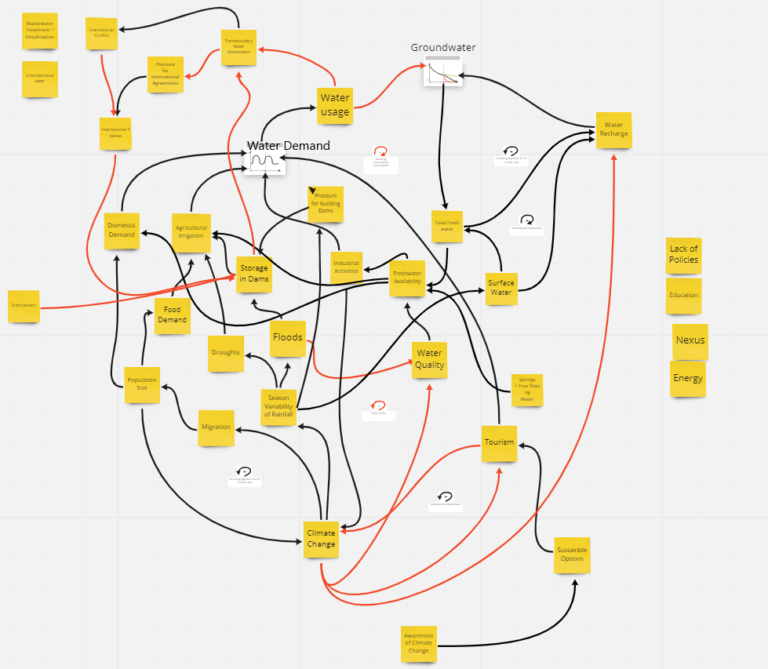Transboundary Groundwater Resilience Network Hosts First Annual Workshop
By Jeanette Torres, NM WRRI Program Coordinator, & Christine Tang, NM WRRI Research Scientist, Assc.
The Transboundary Groundwater Resilience (TGR) Network of Networks (formerly known as TGRR) funded by the National Science Foundation’s Accelerating Research through International Network-to-Network Collaborations (AccelNet) program, was pleased to host its first annual workshop on September 28 and 29. TGR is a collaboration between the New Mexico Water Resources Research Institute (NM WRRI), West Big Data Innovation Hub, and the San Diego Supercomputer Center (SDSC). This partnership was created to develop a new, international network of networks to connect water, social, data, and systems science to establish an innovative transboundary groundwater approach. This effort strives to provide leadership, volunteer, and engagement opportunities for all its partners, especially students and early-career researchers.
This interactive event garnered over thirty participants throughout the workshop. On the first day of the workshop, Dr. Sam Fernald, Director of the New Mexico Water Resources Research Institute and Principal Investigator (PI) on the project, gave opening remarks regarding the current outlook of TGR, including a name change to reflect the progression of the project. TGR aims to evolve from creating connections and content for research networks to engaging with stakeholders and providing actionable guidelines for transboundary groundwater resilience.
After these opening remarks, the workshop began with an introduction to Systems Thinking and Systems Mapping by researchers from the System Dynamics Group at the University of Bergen, Norway. They provided an overview of how to draw systems maps using causal loop diagramming (CLD). CLDs depict, for example, how an increase in variable A causes an increase in variable B, all else equal, then how an increase in variable B causes an increase (or decrease) in variable A, thus reinforcing (or balancing) behavior in systems. Each participant was assigned to an interactive breakout session led by a facilitator who guided a hands-on approach to CLD. In these rooms, attendees were asked to identify critical issues related to groundwater depletion and graphically represent key variables’ (e.g., groundwater level, water demand, etc.) behavior over time using an online whiteboard to collaborate with other session members. These responses were then clustered according to common themes to develop a systems map that enables participants to understand and specify the feedback relationships between concepts. Facilitators frequently engaged participants by inquiring about possible connections that are part of the causal loops.

Figure 1: Example of a systems map using causal loop diagraming produced by a group during the TGR Annual Workshop
The workshop continued on Thursday, where participants were gathered once more into breakout groups to discuss the results of the previous day’s online whiteboard session. Facilitators summarized previously identified loops and emphasized the synergistic or competing loops. Systems mapping can be an intricate activity as seen in Figure 1 above. From this exercise, one can see that this group identified both balancing (indicated by a red arrow with a negative sign inside of it) and reinforcing (indicated by a black arrow with a positive sign) feedback loops. In this group’s map, an increase in Water Demand increases Water usage, which decreases Groundwater, which decreases Total Fresh water, which decreases Freshwater availability, which decreases Industrial Activities, which decreases Water Demand. When going around a single feedback loop to determine loop polarity (+ reinforcing or – balancing), one starts by increasing a variable and only considering the variables in that loop. Think about that loop in isolation. Keep all variables outside of that loop constant. After one finishes going around the loop and finds that the same variable has decreased, then one has identified a balancing feedback loop.
After the systems mapping activity, there was a research agenda-setting activity where participants could contribute their thoughts and ideas concerning significant connections, areas that seemed especially challenging, and variables that could be influential in a system. Once these relationships were established, attendees could “plot” these onto a matrix by importance and uncertainty to prioritize research needs. Once this activity concluded, each breakout group returned to the main room and presented their findings. The systems maps from this workshop will be publicly available for researchers and policymakers to understand this participant group’s mental model of how to achieve transboundary groundwater resilience. In addition to the workshop, NM WRRI and the University of Bergen administered a pre- and post-workshop survey to understand what participants’ transboundary groundwater resilience research priority areas are and whether that is reflected in the systems maps. The University of Bergen plans to analyze the data to produce a journal publication in collaboration with the TGR team.
This interactive workshop is just one of several opportunities to provide input on the challenges and needs for more effective transboundary groundwater research and management. Interested individuals, institutions, and networks can list themselves on the TGR Network of Networks Member Directory by filling out the new TGR Member Suave Survey. This form collects detailed and personalized data from each survey-taker to grow and evolve the directory to create more possible collaboration opportunities. TGR is actively seeking volunteers to engage and learn about coordinating international, cross-disciplinary research collaboration that will lead to actionable agendas for resilience. Volunteers will learn how to organize, run, and sustain a collaborative setting while learning about each other’s work to develop a shared understanding of the scientific language used by different groups. TGR specifically encourages participation from underrepresented groups in academia, and the team will work with the volunteers to ensure that their position aligns with their career goals. Interested individuals can apply here.
A video recording of opening remarks and presentation links are available on the TGR website.
For more information on becoming involved, visit the TGR website, or sign up for the mailing list to learn about future TGR events and announcements.
